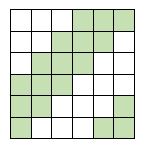We can classify fabrics as follows:

Weaving fabrics are formed by thread passes in a transversal direction to the warp (threads placed in a longitudinal direction).
Knitted fabrics are made up of yarns in the form of a mesh.
Non-woven fabrics are formed from napas.

The ligament is the shape or structure in which yarns are woven to form the desired tissue.
Warp are the threads that are placed longitudinally, and the weft are those that are intertwined horizontally.
Ligaments can be simple (fundamental and derivative) or compound. The fundamental ligaments are those we know by taffeta, serge and rasos, each of them having its derivatives.
Taffeta or flat has a 1-1 structure, which makes it the simplest ligament. If we look at the fabric on one side and the other, we will see that it is the same.

The most commonly used twill structure is 2-1 or 3-1, which means that 2 or 3 weft threads pass over the warp, and only one warp thread over the weft threads.


For their part, satins must meet the following conditions:
- The warp and weft threads can be any number except the unit.
- The number of warp and weft threads cannot be the same.
Here are some examples of satins:
Satin 5: 3-2; Satin 6 does not exist since it would be 3-3 and cannot be equal numbers; Satin 7: 5-2 or 4-3; Satin 8: 5-3; Satin 9: 7-2 or 5-4….
There are different simple and derivative ligaments. Here we show you the BATAVIA twill, one of the most used derivative twills.


